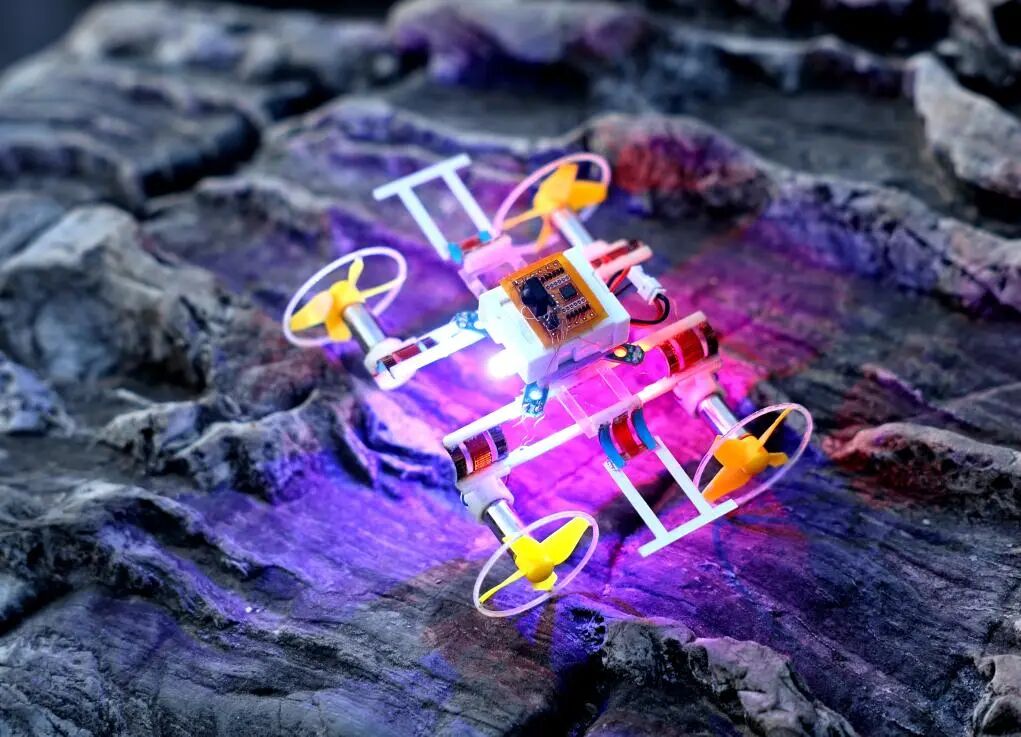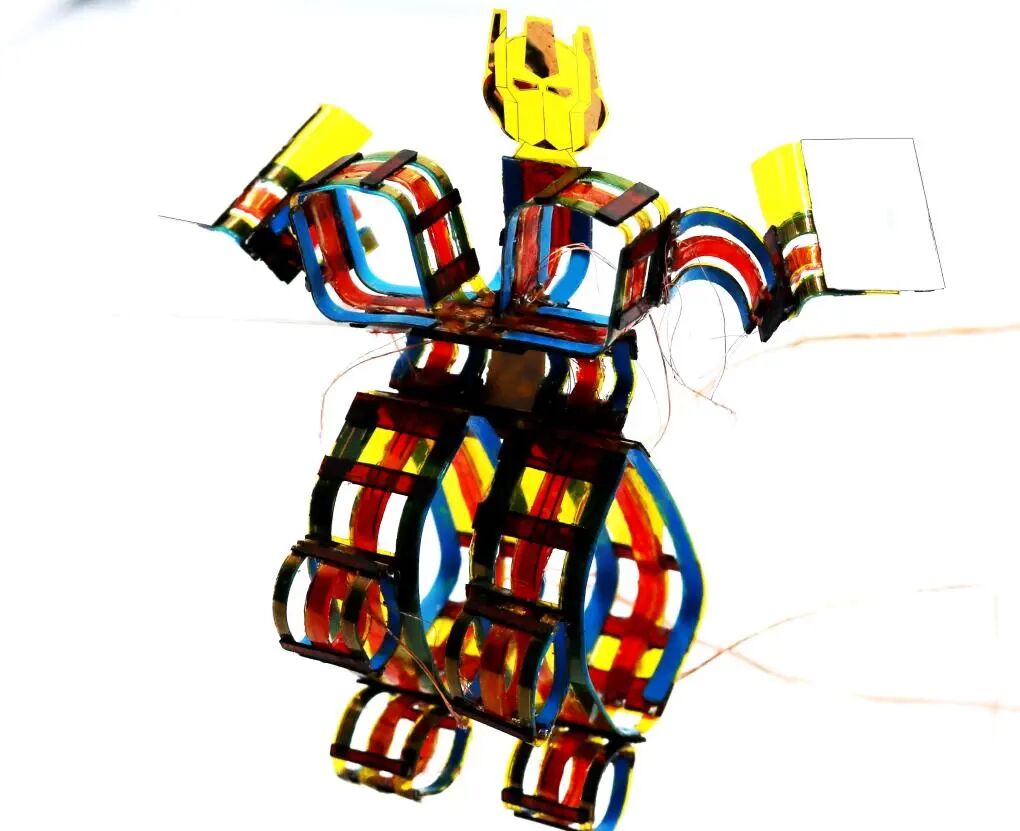The actuator is a device with controllable deformation capabilities, serving as the “heart” of the micro robot. A research team from Tsinghua University has recently developed a film-like micro actuator that allows the micro robot to achieve continuous shape changes and “lock” its specific action forms, enhancing its environmental adaptability. Researchers stated that using this actuator and a “building block” design method developed by the team, they have created the world’s smallest and lightest micro wireless amphibious robot known to date, measuring 9 cm in length and weighing 25 g. This achievement was published online on the evening of the 18th in the prestigious international journal “Nature – Machine Intelligence”.
The image shows the micro wireless amphibious robot in ground movement mode (provided by the Tsinghua team).
This allows the robot to perform actions such as walking, running, jumping, flying, and climbing, while also being able to fix any shape at any time, which is a key factor for the diversification of robot application scenarios. It is reported that currently, small-scale actuators under 5 cm typically struggle to achieve both continuous shape changes and configuration locking simultaneously, which severely limits the miniaturization and wireless development of robots with multiple motion modes. Based on innovative material and structural collaborative design methods, Professor Zhang Yihui’s research group from Tsinghua University’s School of Aerospace Engineering and the National Key Laboratory of Flexible Electronics has independently developed micro actuators as small as a few millimeters, which can be used as “deformable exoskeletons” to integrate sensors, motors, and other functional components, thereby constructing complex robotic systems. “Making a robot small, light, wirelessly controlled, and capable of complex shape switching is very challenging,” said Zhang Yihui. The new actuator has excellent deformation and locking capabilities, allowing for continuous deformation to any state and “locking” the shape through electrical control—something that has been difficult to achieve with previous small-sized actuators. The micro amphibious robot assembled using this actuator can run and fly, with a maximum ground movement speed of up to 1.6 meters per second.
The image shows a mini version of “Transformers” made up of multiple actuator units (provided by the Tsinghua team).
In addition, the team has created a mini version of “Transformers” that is 4.5 cm tall and weighs only 0.8 g using more than 10 actuators. Zhang Yihui stated that this achievement provides new ideas and pathways for the research and application of micro robots. In the future, this micro amphibious robot could be applied in scenarios such as equipment fault diagnosis and maintenance, geological and cultural relic exploration, replacing humans in performing various tasks in complex and hazardous environments.
Planning and Production
Source: Xinhua News Agency
Editor: Wang Mengru
Proofread by: Xu Lai, Lin Lin

Light up the “Look”
Let’s gain knowledge together!
